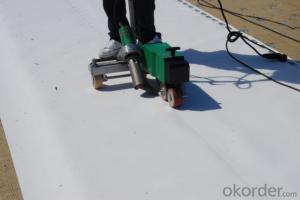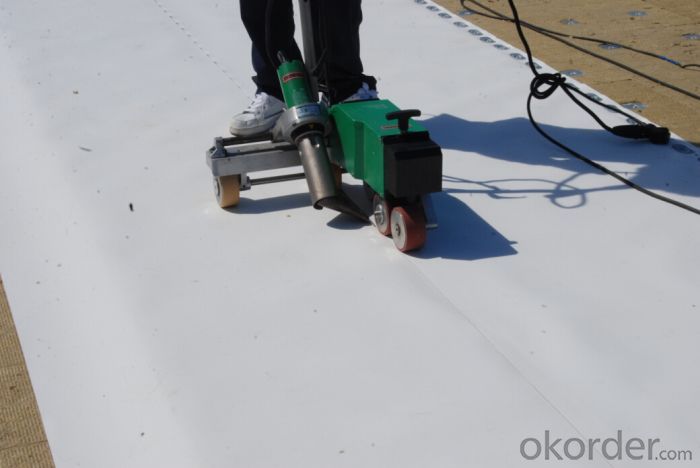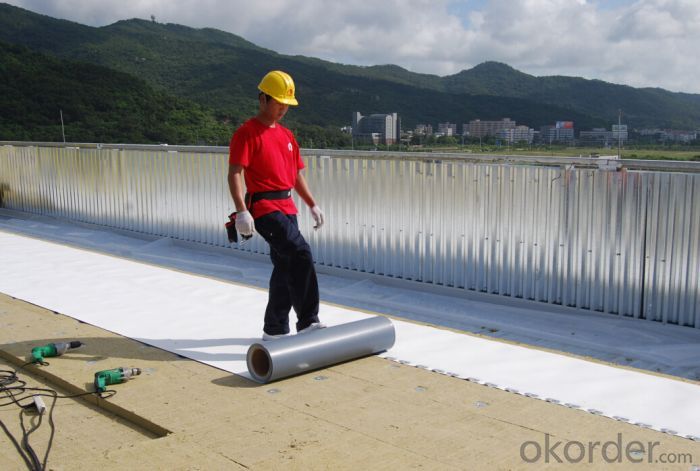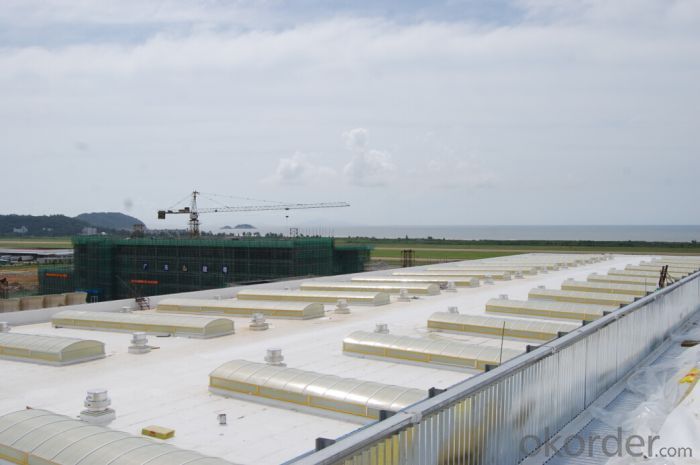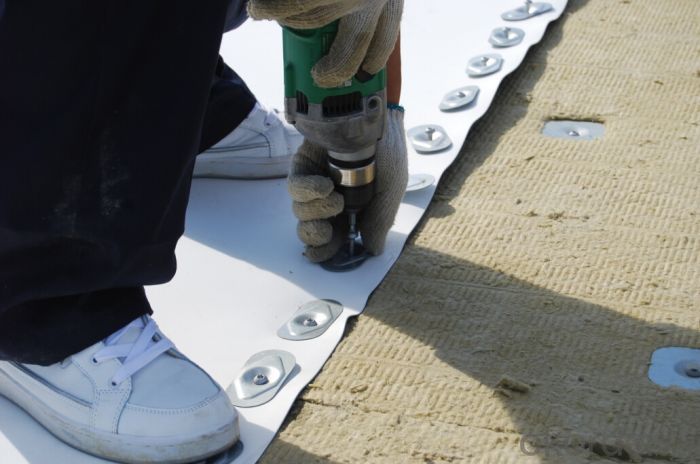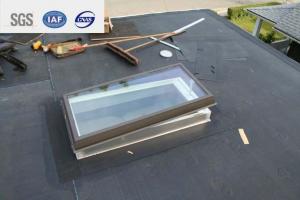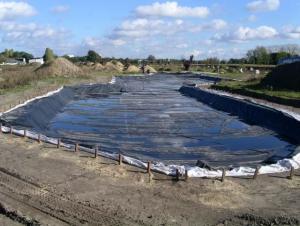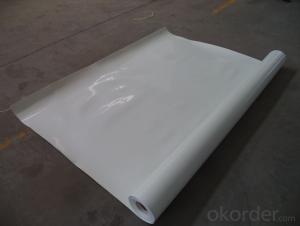TPO Waterproof Membrane 1.5mm with Largest Supplier in China
- Loading Port:
- China Main Port
- Payment Terms:
- TT or LC
- Min Order Qty:
- 5000 m²
- Supply Capability:
- 100000 m²/month
OKorder Service Pledge
OKorder Financial Service
You Might Also Like
TPO Waterproof Membrane
TPO is a waterproofing sheet, consisting of thermoplastic polyolefin, and compound resin materials as the base stock, reinforced with polyester mesh fabric.
Product Applications:
● Various roofing waterproof projects, such as industrial and civil buildings,
● Mechanically attached waterproofing system.
Product Advantages:
1. Weather resistance and durability; Excellent weld ability;
2. No any crisp agents to prevent materials brittleness;
3. Intermediate enhanced polyester mesh fabric to have high tensile strength, fatigue resistance and penetrating resistance suitable for mechanically attached roofing systems;
4. Excellent the same high and low temperature resistance as rubber materials which can keep flexible at -50° C and keep mechanical strength in high temperature;
Main Product Features:
1.. Excellent chemical resistance to acids, bases, and restaurant exhaust emissions; Dimension stability;
2.. White-based light-color and smooth surface with high reflection, energy saving and anti-dust functions;
3. Use heat welding for the seam areas to form a reliable seamless waterproof layer.
Product Specifications:
Item | Requirement | Test Method | ||
Thickness, min, mm | Sheet-overall | ≥1.0 | ASTM D6878 | |
Coating over fabric or scrim, weathering side only | ≥0.305 | ASTM D751 | ||
Breaking strength, min, N | ≥976 | ASTM D751 | ||
Elongation at reinforcement break, min, % | ≥15 | ASTM D751 | ||
Tearing strength,min, N | ≥245 | ASTM D751 | ||
Brittleness point, max, °C | ≤-40 | ASTM D2137 | ||
Ozone resistance | no cracks | ASTM D1149 | ||
Properties after heat aging | Breaking strength, % min | ≥90 | ASTM D573 | |
Elongation at reinforcement break, % min | ≥90 | ASTM D573 | ||
Tearing strength, % min | ≥60 | ASTM D573 | ||
Weight change (mass), max % | ≤±1 | ASTM D573 | ||
Linear dimensional change, max, % | ≤±1 | ASTM D1204 | ||
Water absorption, max, mass % | ≤±3.0 | ASTM D471 | ||
Factory seam strength, min, N | ≥290 | ASTM D751 | ||
Weather resistance | Visual inspection | - | ||
FAQ:
Q: Can I visit your company?
A: Yes, welcome to visit our enterprise.
Q: Can I do the third party testing before loading?
A: Yes, we could accept the third party testing.
Q: Which kind of payment in your company?
A: We could accept TT, LC at sight, etc.
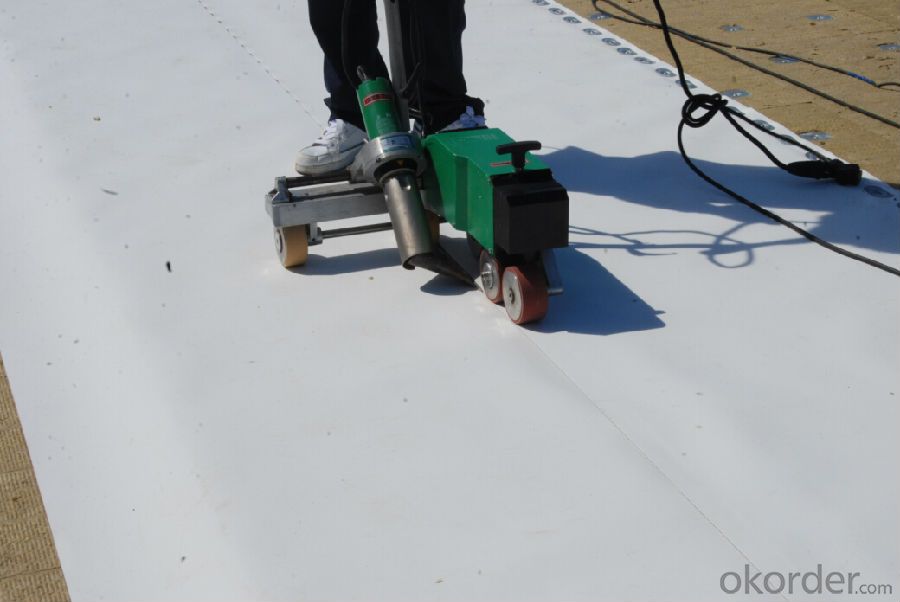
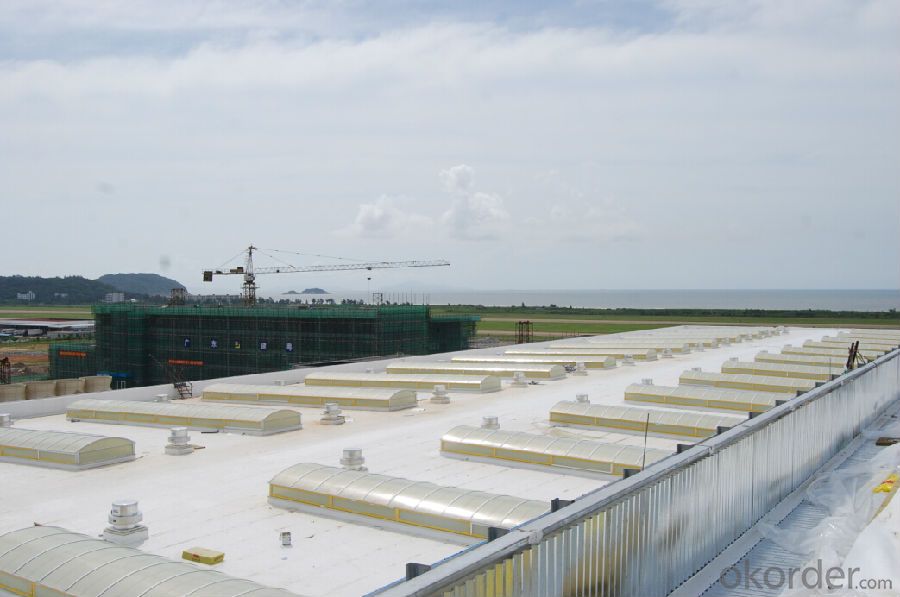

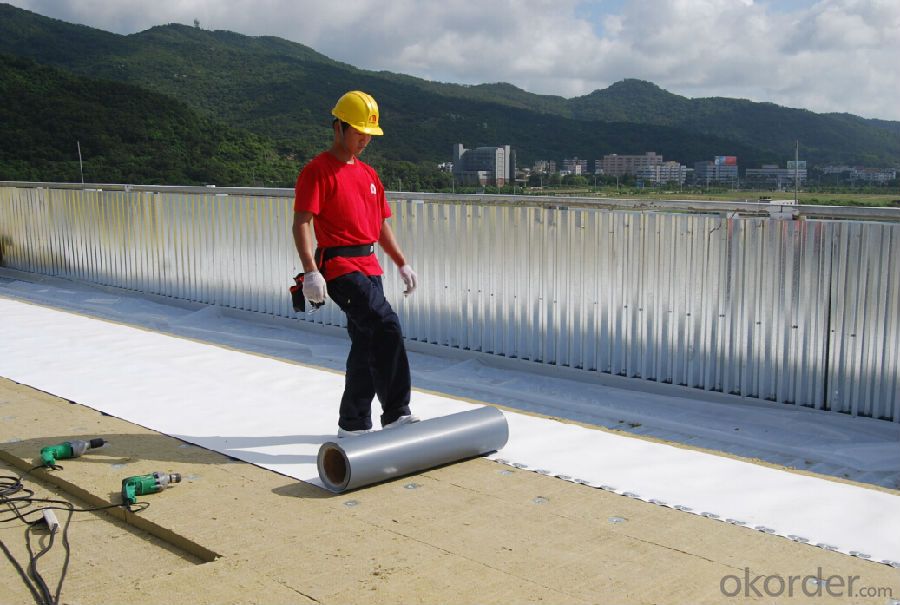
- Q: Can a waterproofing membrane be used for a residential building?
- Yes, a waterproofing membrane can be used for a residential building. It can be applied to various surfaces such as roofs, basements, and foundations to prevent water infiltration and protect the structure from moisture damage.
- Q: How long does a waterproofing membrane typically last?
- The lifespan of a waterproofing membrane can vary depending on various factors such as the type and quality of the membrane, installation method, environmental conditions, and maintenance. However, on average, a properly installed and maintained waterproofing membrane can last anywhere from 10 to 20 years. Some high-quality membranes may even last longer, up to 30 years or more. It is important to note that regular maintenance, including inspections and repairs if necessary, can significantly extend the lifespan of a waterproofing membrane. Additionally, factors such as exposure to harsh weather conditions, ultraviolet (UV) radiation, chemicals, and foot traffic can affect the durability of the membrane and may require more frequent maintenance or replacement. To ensure the longevity of a waterproofing membrane, it is recommended to follow the manufacturer's guidelines for installation, maintenance, and repair. Regular inspections, especially after severe weather events or significant changes in the surrounding structures, are crucial to identify any potential issues and address them promptly. By taking proper care of the waterproofing membrane, you can maximize its lifespan and protect the underlying structure from water damage.
- Q: Are waterproofing membranes suitable for historical preservation projects?
- Waterproofing membranes can be suitable for historical preservation projects, depending on the specific circumstances and goals of the project. Waterproofing membranes are designed to provide a protective barrier against water infiltration, which can help to prevent damage to historical structures caused by moisture. In some cases, historical buildings may have existing waterproofing systems that are deteriorated or no longer effective. In these situations, the use of modern waterproofing membranes can be a viable option to protect and preserve the structure. These membranes can be installed discreetly, without altering the original appearance or architectural integrity of the building. However, it is crucial to approach the use of waterproofing membranes in historical preservation projects with caution. The potential impact on the authenticity and historical value of the structure must be carefully evaluated. Some historical buildings may have unique construction methods or materials that require specialized preservation techniques. In such cases, alternative preservation methods that do not involve the use of membranes may be more appropriate. Additionally, it is important to consider the long-term consequences and maintenance requirements of waterproofing membranes. Some membranes may have a limited lifespan, and periodic inspections and maintenance may be necessary to ensure their continued effectiveness. This ongoing maintenance should be factored into the overall preservation plan and budget. Ultimately, the decision to use waterproofing membranes in historical preservation projects should be based on a thorough assessment of the specific needs and characteristics of the building, as well as the preservation objectives. Consulting with preservation experts, architects, and engineers can help to determine the most suitable approach for each unique project.
- Q: What are the requirements for frost resistance of basement floor polymer waterproofing membranes?
- Requirements are, when the material quality testing, the ground temperature must meet the requirements of national norms.
- Q: Can waterproofing membranes be used on concrete countertops?
- Concrete countertops can indeed benefit from the application of waterproofing membranes. These membranes are specially crafted to thwart the infiltration of water and can be utilized on diverse surfaces, including concrete. By opting for a waterproofing membrane on a concrete countertop, one can effectively safeguard it against water harm, staining, and possible structural concerns. Furthermore, these membranes can augment the countertop's resilience and lifespan by averting moisture-induced problems, such as cracking or warping. It is imperative to verify that the selected waterproofing membrane is concrete-compatible and appropriate for countertop use.
- Q: Can a waterproofing membrane be used on aerated concrete block surfaces?
- Yes, a waterproofing membrane can be used on aerated concrete block surfaces. The membrane helps to prevent water penetration, protecting the aerated concrete blocks from moisture damage and increasing their longevity.
- Q: Can a waterproofing membrane be used for water tanks and reservoirs?
- Yes, a waterproofing membrane can be used for water tanks and reservoirs. Waterproofing membranes are specifically designed to provide a barrier against water penetration, making them an ideal choice for protecting water tanks and reservoirs from leaks and seepage. These membranes are typically made of durable materials such as modified bitumen, PVC, EPDM, or TPO, which are resistant to water and can withstand prolonged exposure to moisture. The application of a waterproofing membrane on the walls and floors of water tanks and reservoirs creates a seamless and watertight seal, preventing any water loss or contamination. Additionally, these membranes can be customized to suit different types of water tanks and reservoirs, ensuring a perfect fit and maximum protection. Overall, using a waterproofing membrane is an effective and reliable solution for maintaining the integrity of water tanks and reservoirs and ensuring the safe storage of water.
- Q: Can a waterproofing membrane be used in conjunction with concrete repair or restoration?
- Indeed, it is common practice to utilize a waterproofing membrane in conjunction with concrete repair or restoration. It is advisable to employ a waterproofing membrane as a safeguarding layer on top of repaired or restored concrete surfaces. This is due to the potential compromise of the original concrete's waterproofing properties during the repair or restoration process. Application of a waterproofing membrane guarantees the continued protection of the repaired or restored concrete against water infiltration, thereby preventing additional harm and deterioration. Moreover, the waterproofing membrane contributes to bolstering the overall strength and lifespan of the concrete structure.
- Q: Can a waterproofing membrane be used on precast concrete block surfaces?
- Yes, a waterproofing membrane can be used on precast concrete block surfaces. Waterproofing membranes are commonly used to protect below-grade structures, such as basements and foundations, from water intrusion. Precast concrete blocks are commonly used in the construction of these structures, and applying a waterproofing membrane can help prevent water from penetrating through the concrete and causing damage. The membrane acts as a barrier, preventing the passage of water while still allowing the concrete to breathe and release any moisture buildup. Additionally, waterproofing membranes can also help improve the overall durability and longevity of the precast concrete blocks by protecting them from moisture-related issues such as cracking, spalling, and corrosion. It is important to choose a waterproofing membrane that is specifically designed for below-grade applications and is compatible with concrete surfaces to ensure proper adhesion and long-term effectiveness.
- Q: Can a waterproofing membrane be used for underground parking structures?
- Yes, a waterproofing membrane can be used for underground parking structures. Underground parking structures are particularly vulnerable to water infiltration due to their location and exposure to groundwater. Waterproofing membranes are designed to provide a protective barrier against water penetration, preventing potential damage to the structure and its contents. These membranes are typically applied to the exterior walls and floors of the underground parking structure, ensuring a watertight seal. Additionally, the use of a waterproofing membrane can also help to prevent the formation of moisture-related issues such as mold growth, corrosion, and deterioration of concrete. Therefore, incorporating a waterproofing membrane is essential for the long-term durability and functionality of underground parking structures.
Send your message to us
TPO Waterproof Membrane 1.5mm with Largest Supplier in China
- Loading Port:
- China Main Port
- Payment Terms:
- TT or LC
- Min Order Qty:
- 5000 m²
- Supply Capability:
- 100000 m²/month
OKorder Service Pledge
OKorder Financial Service
Similar products
Hot products
Hot Searches
Related keywords
